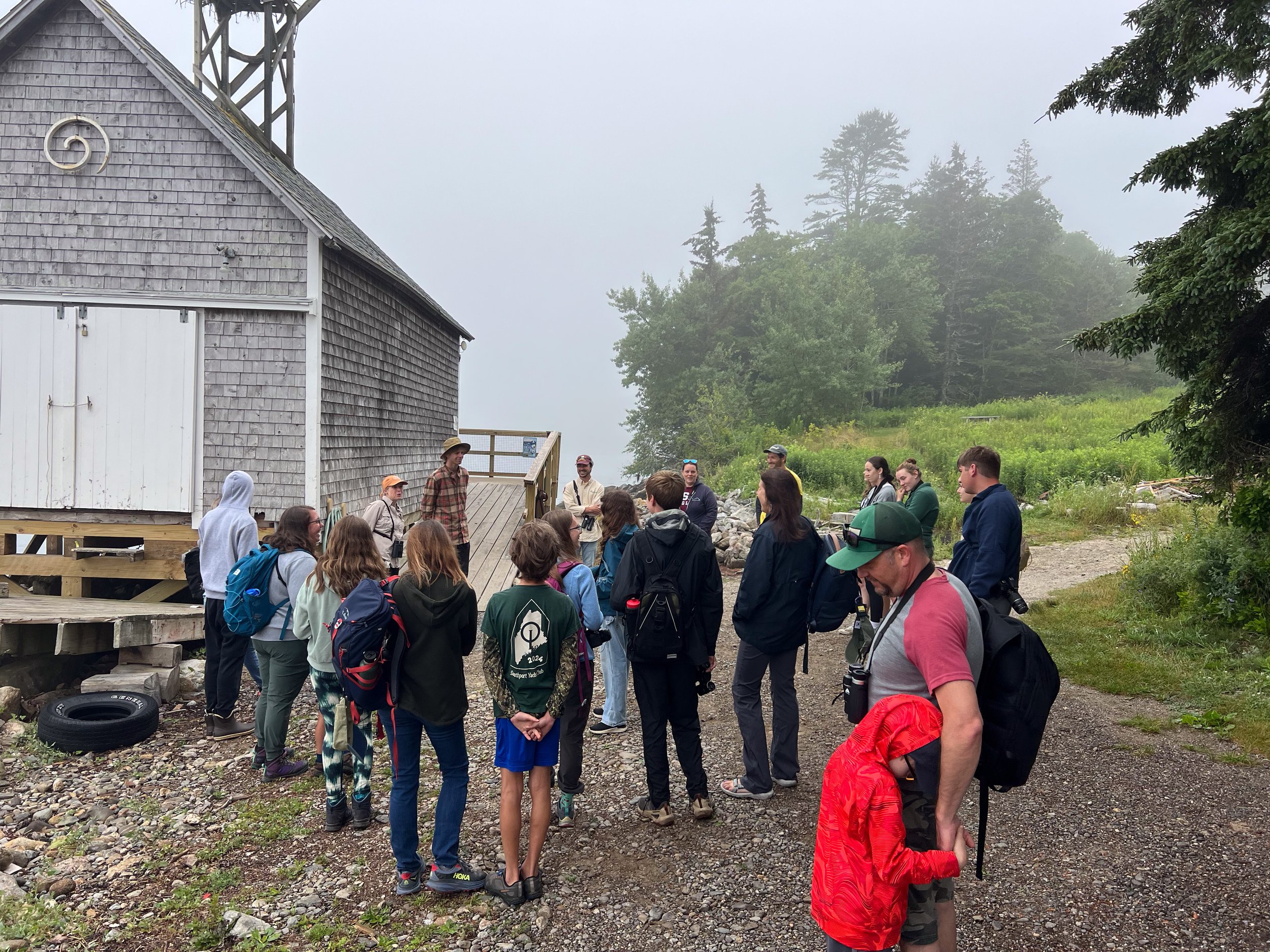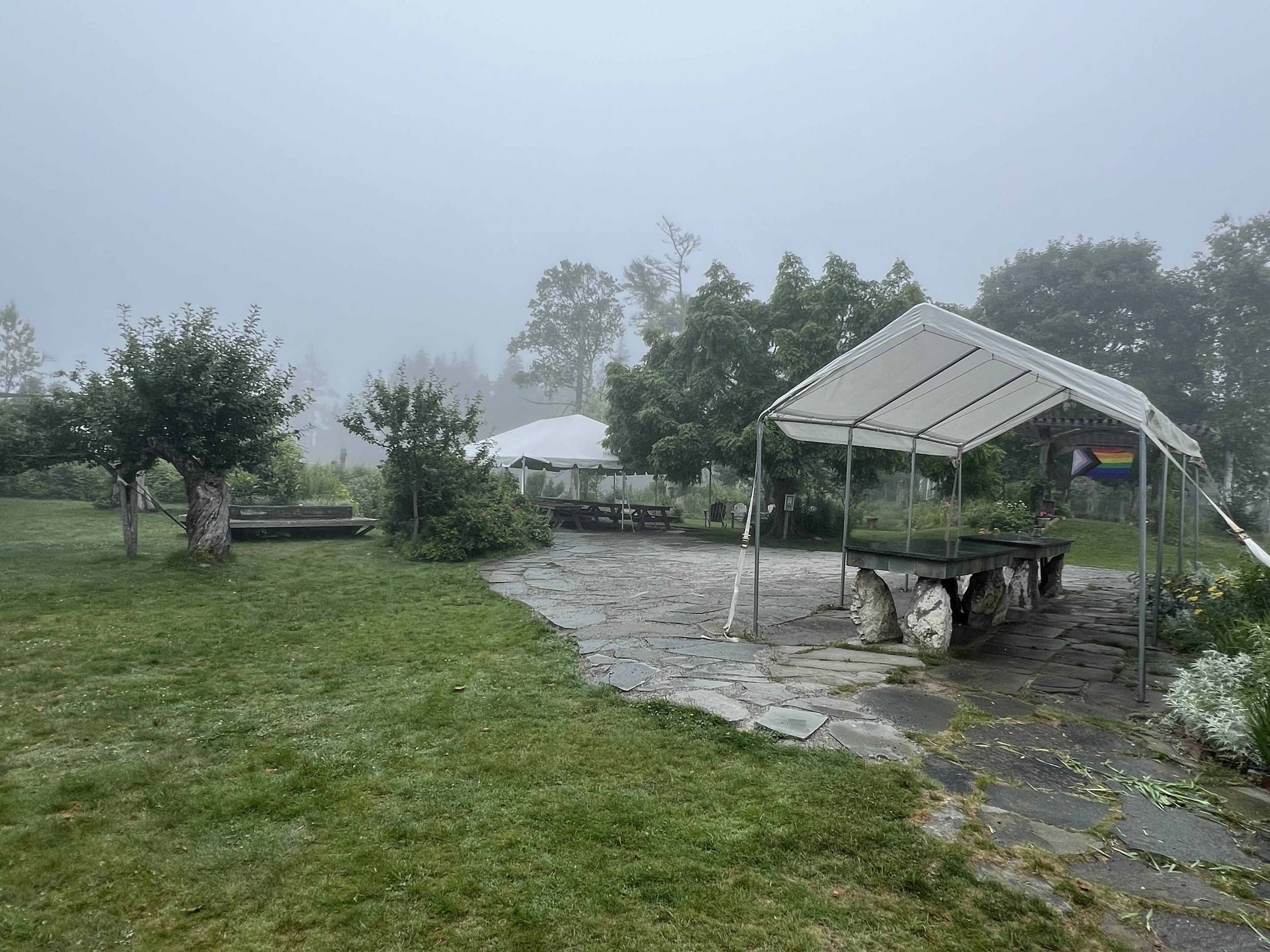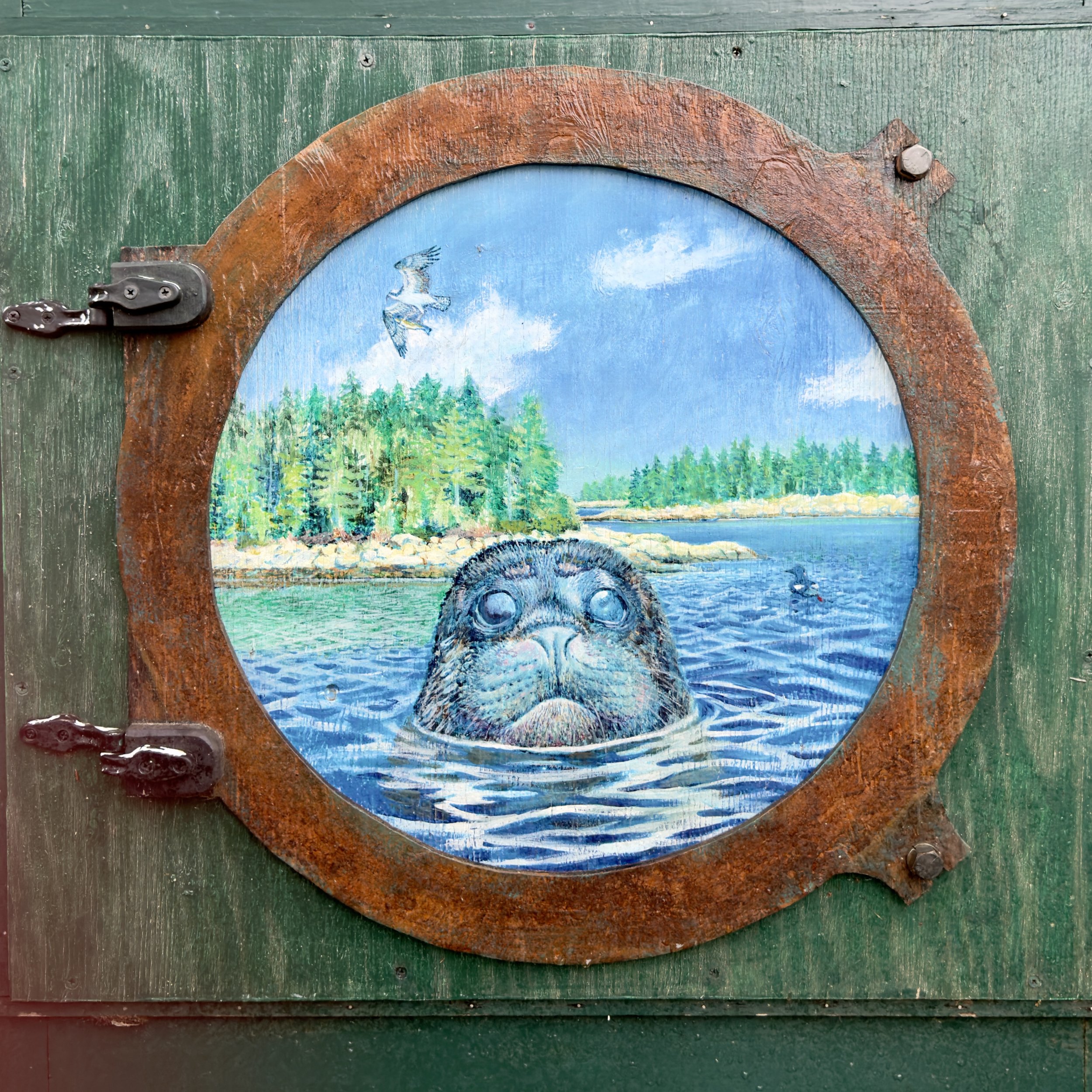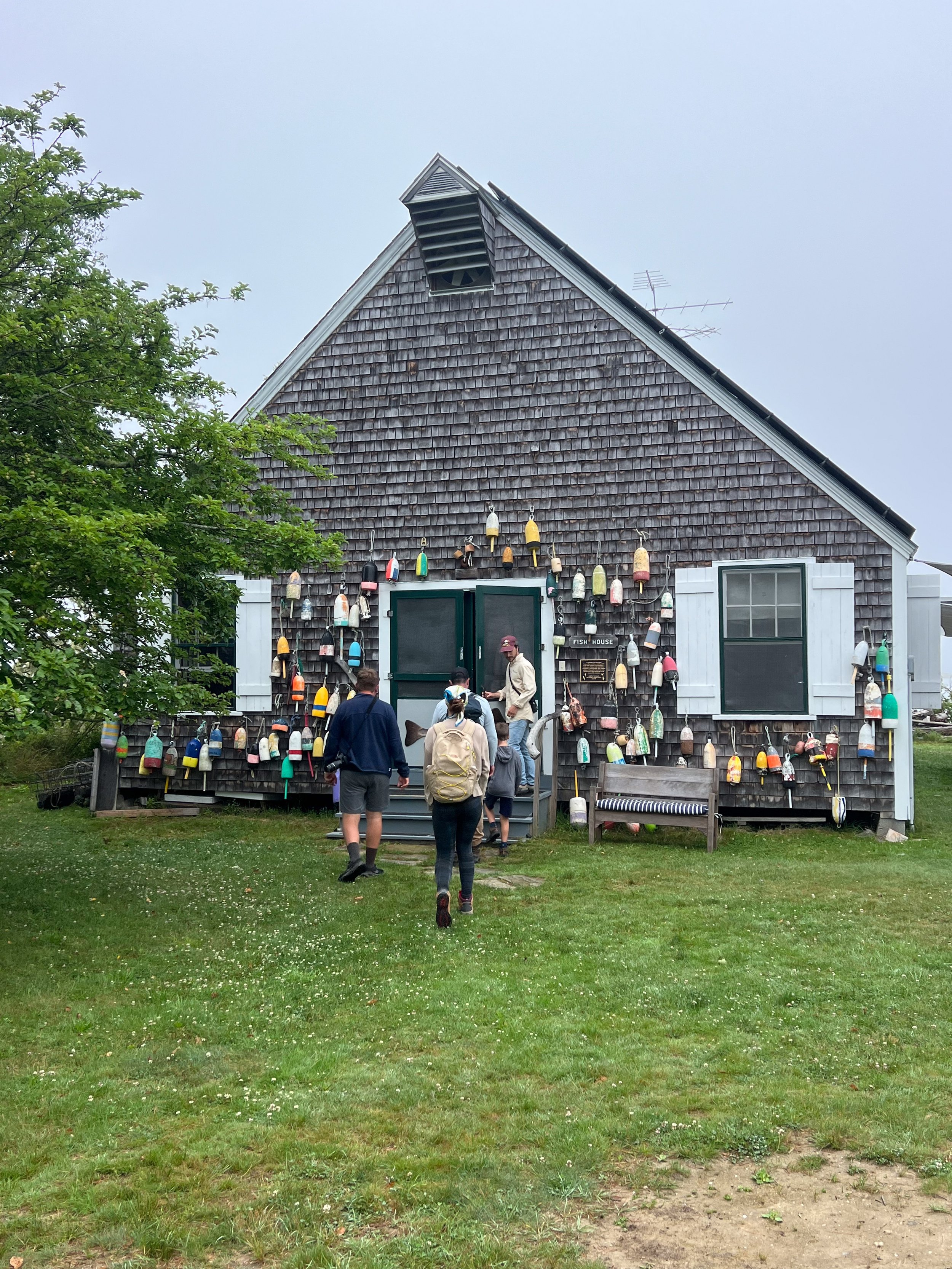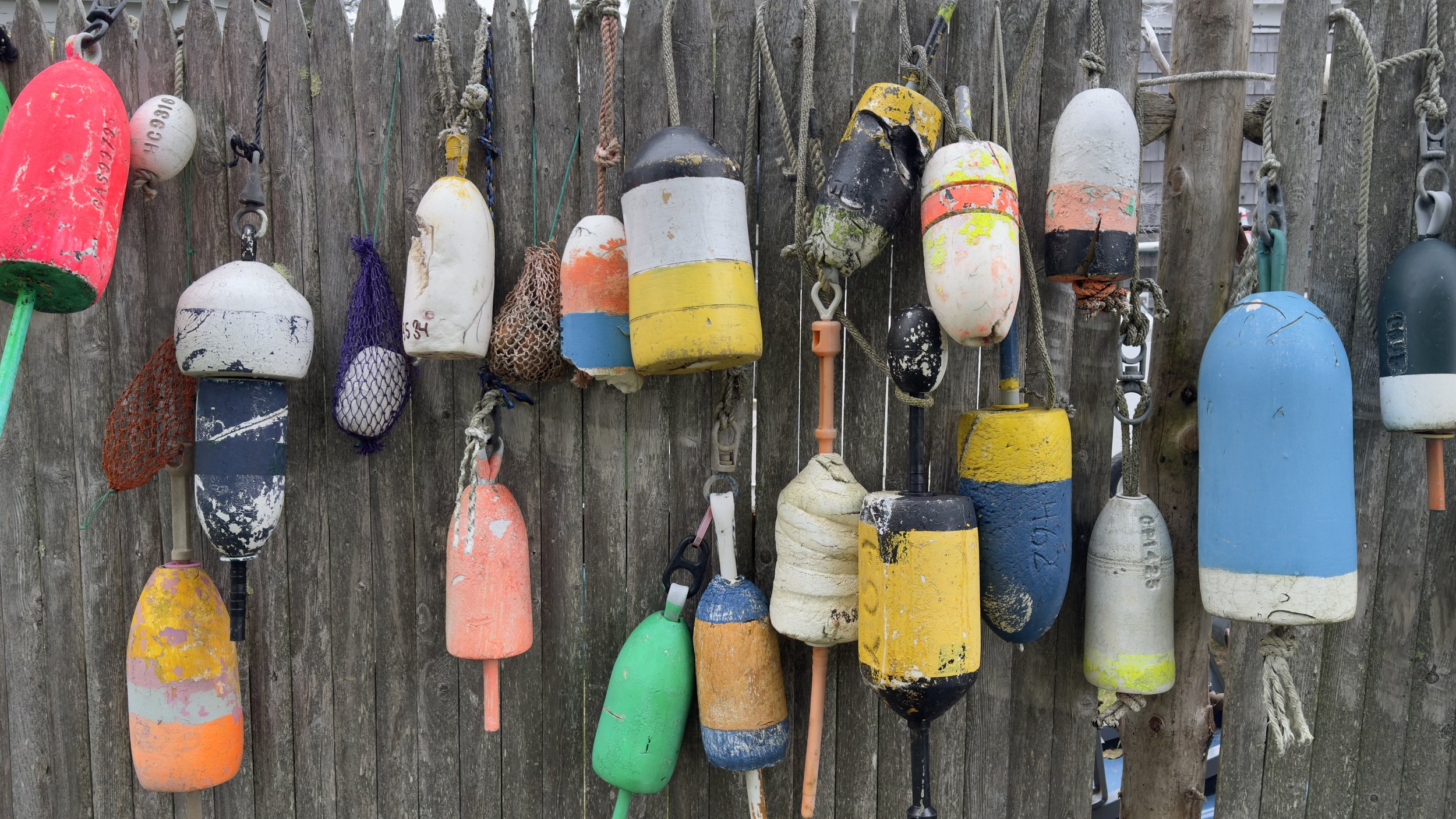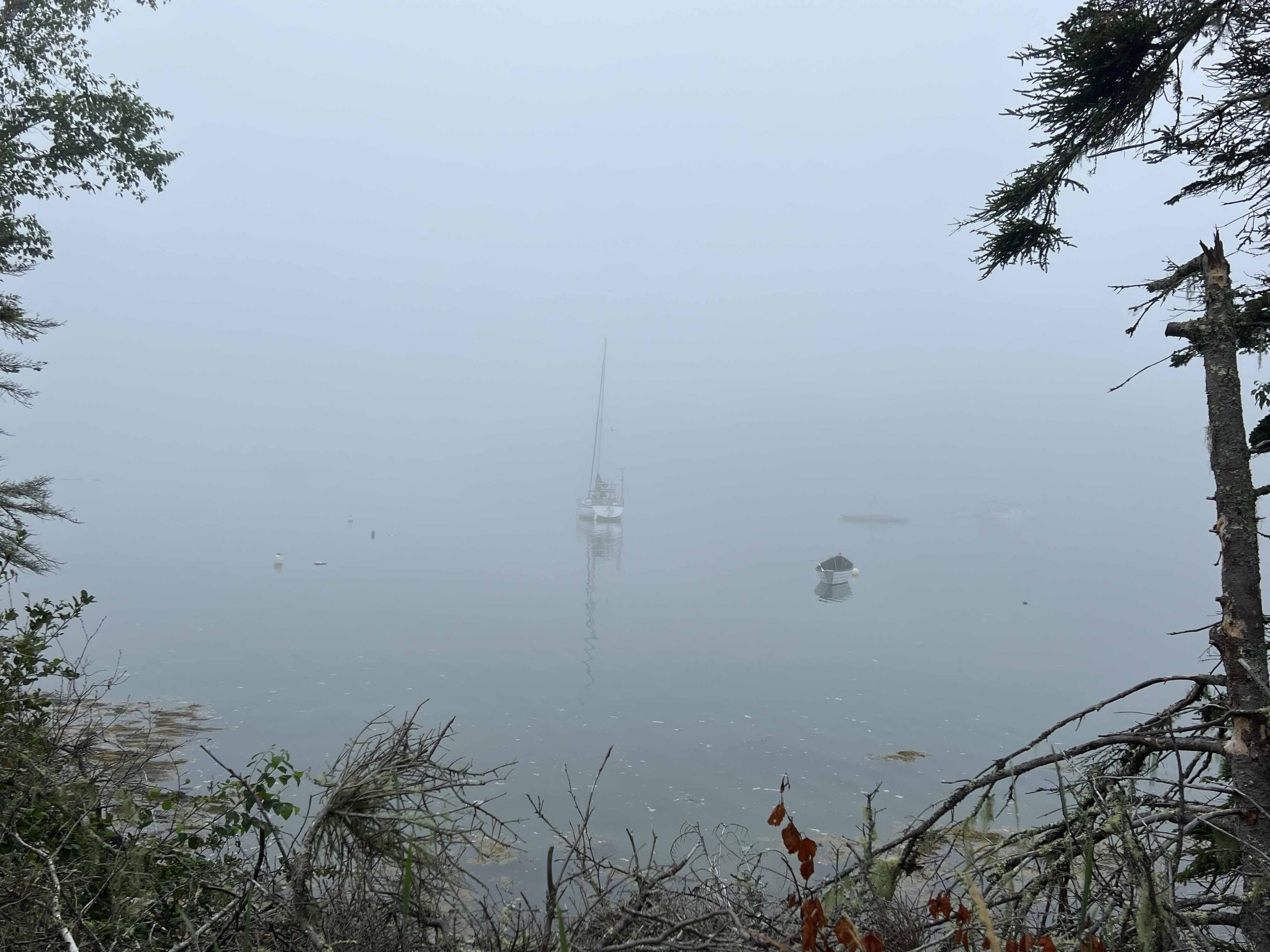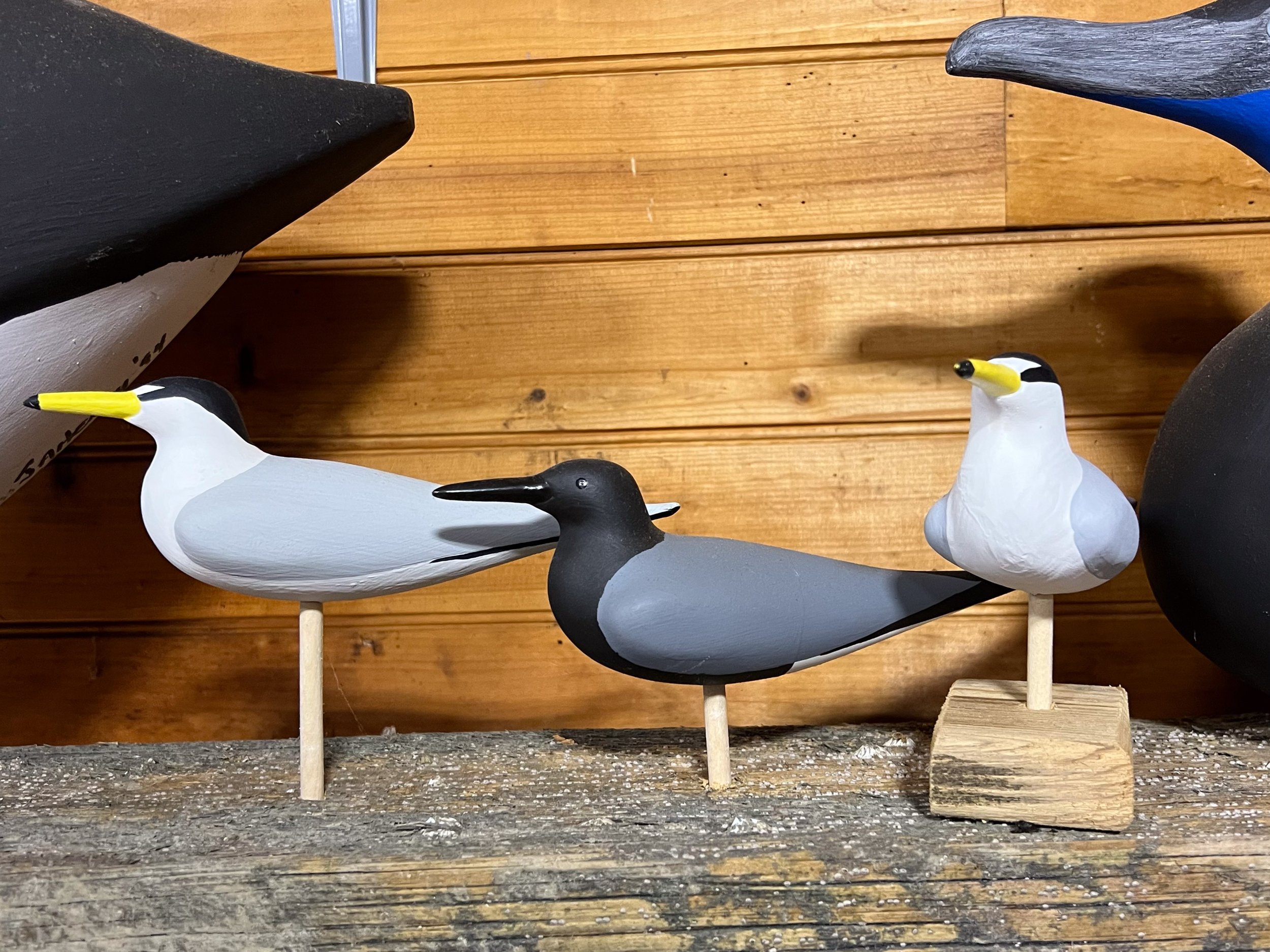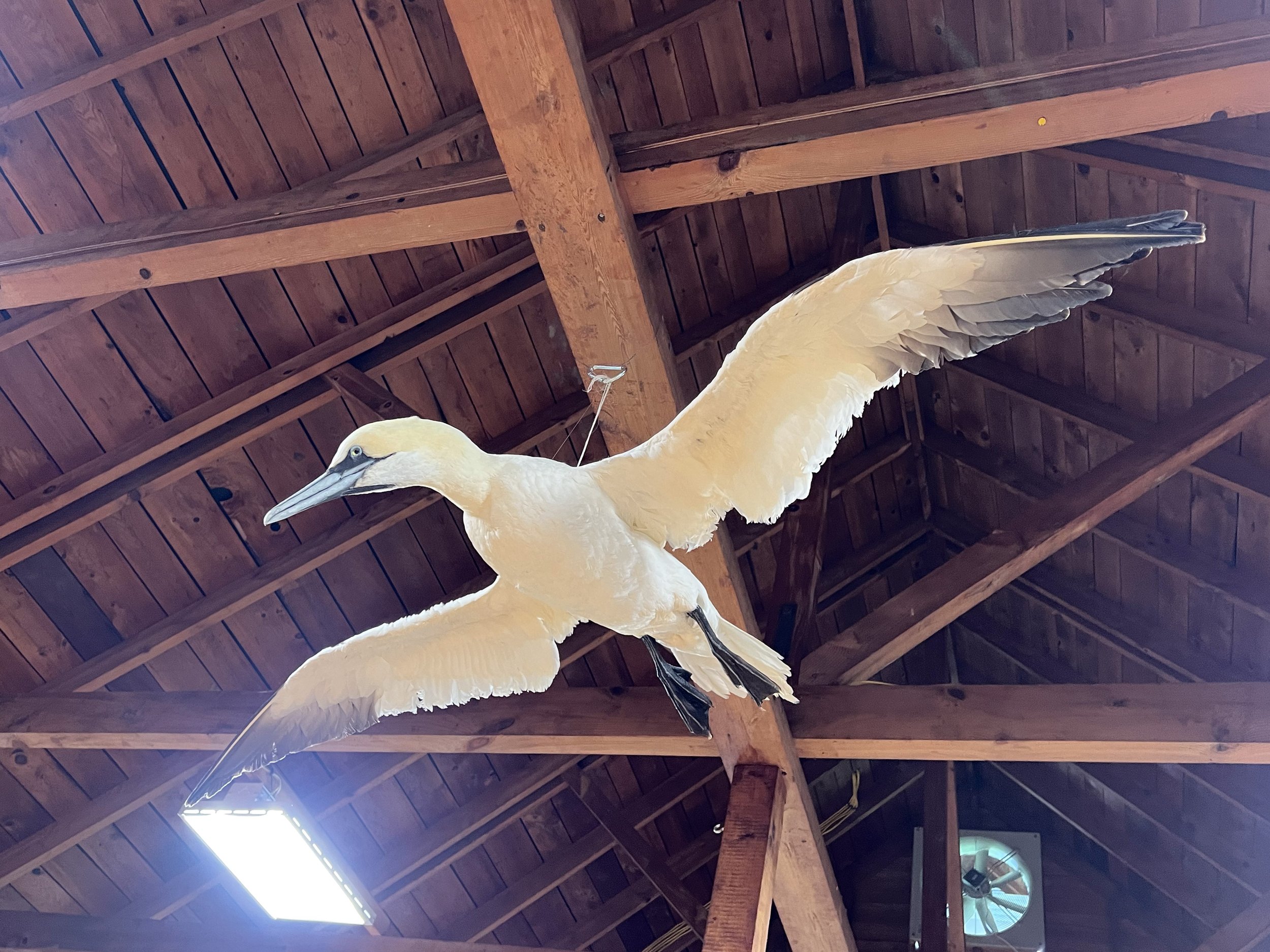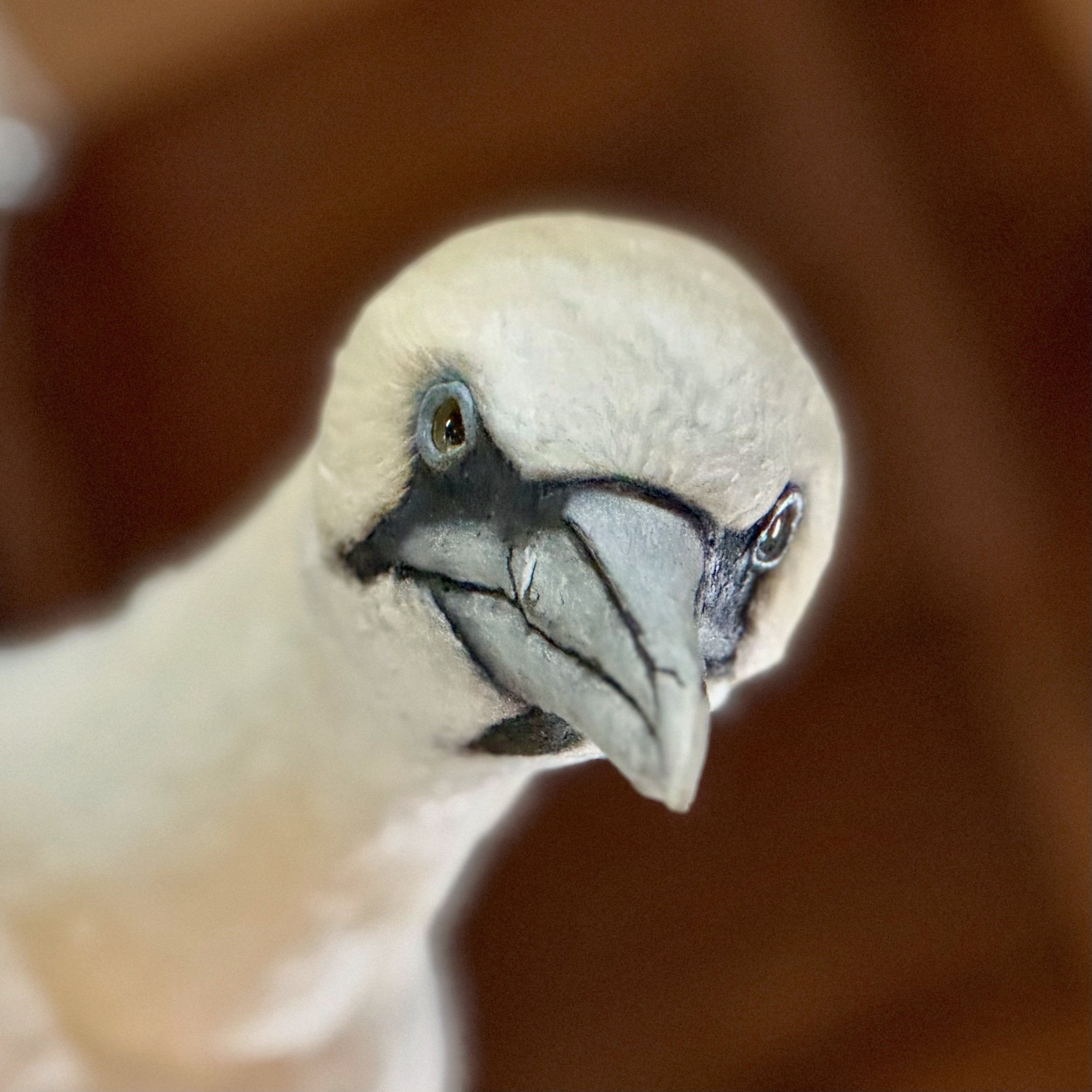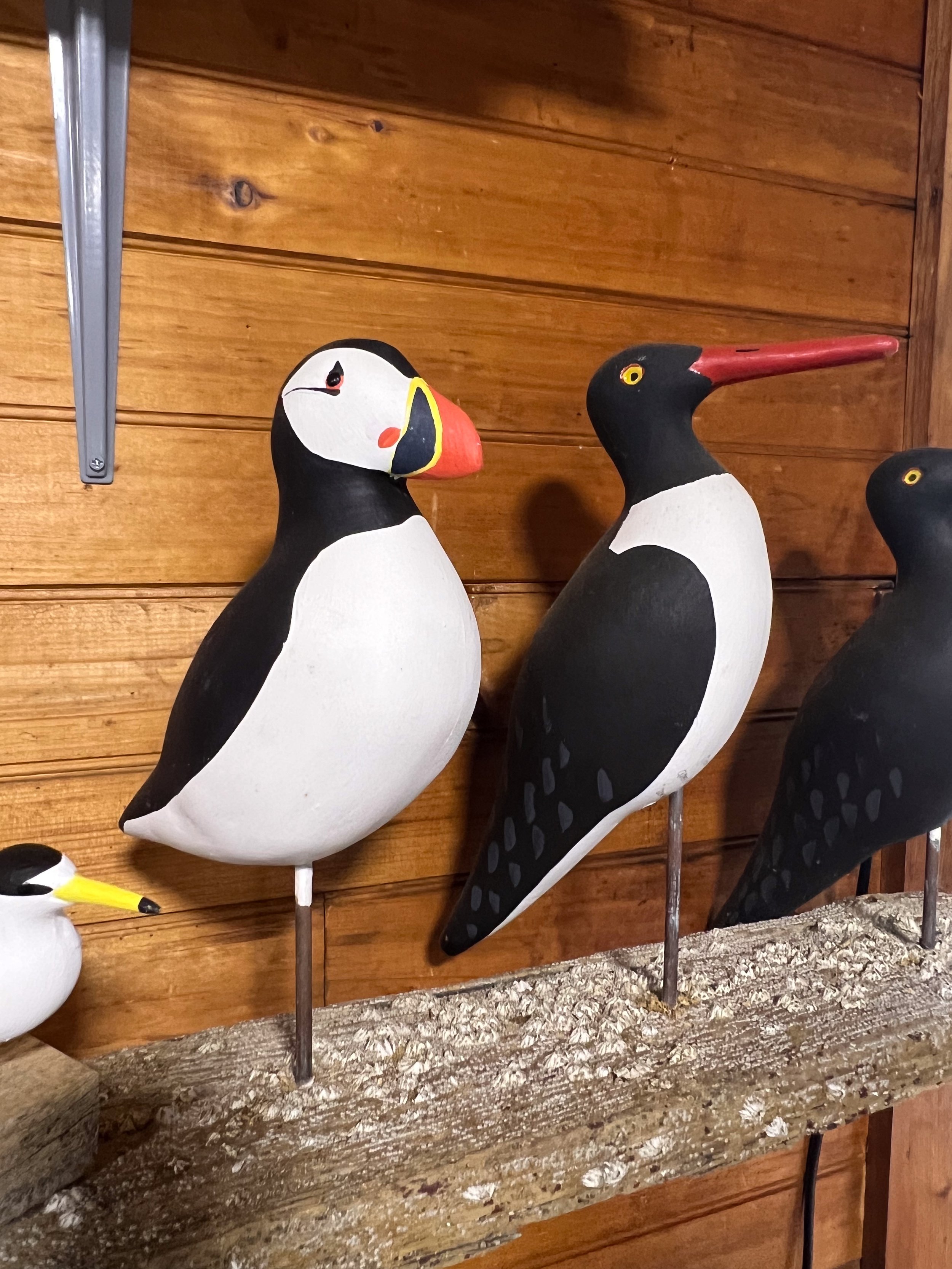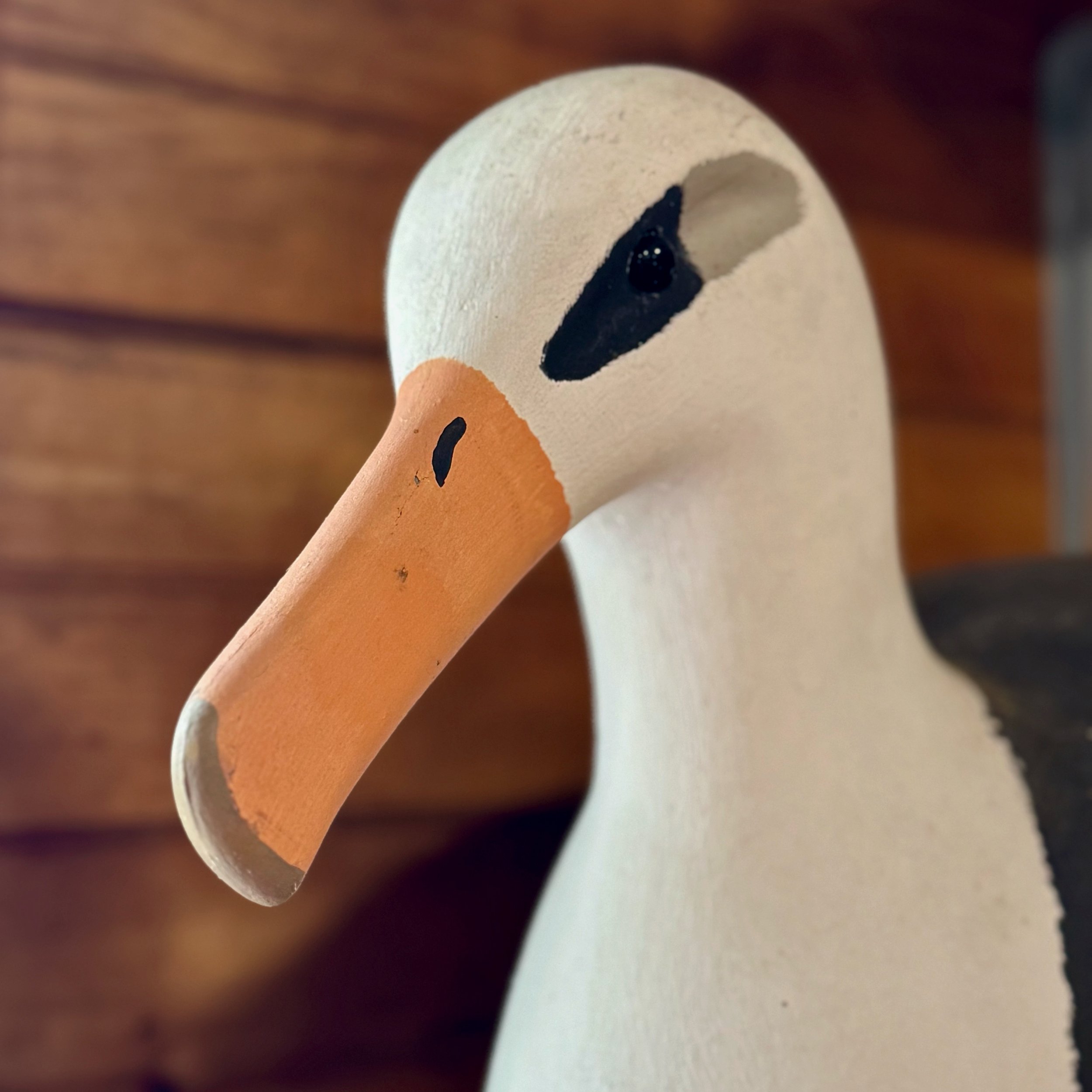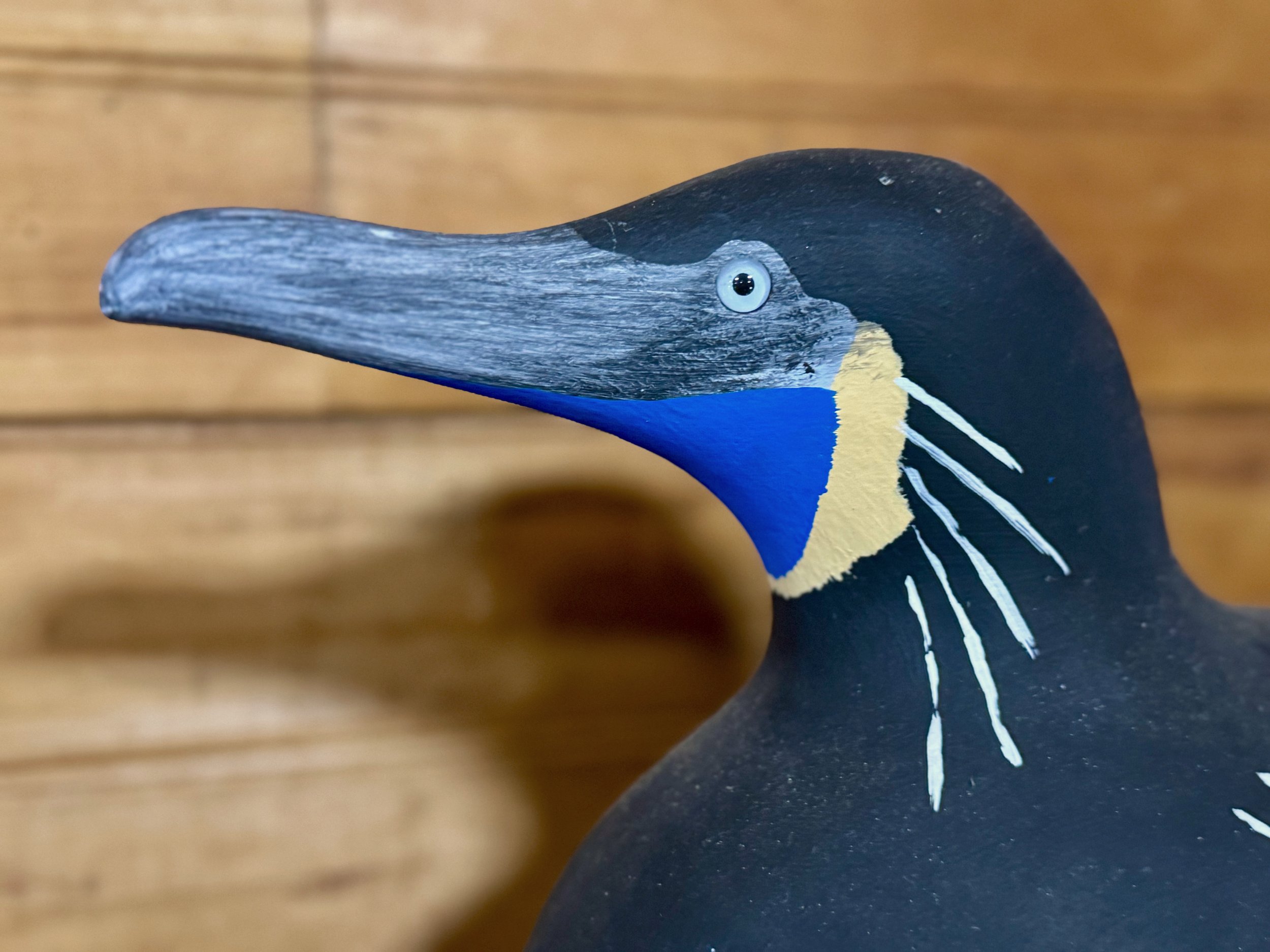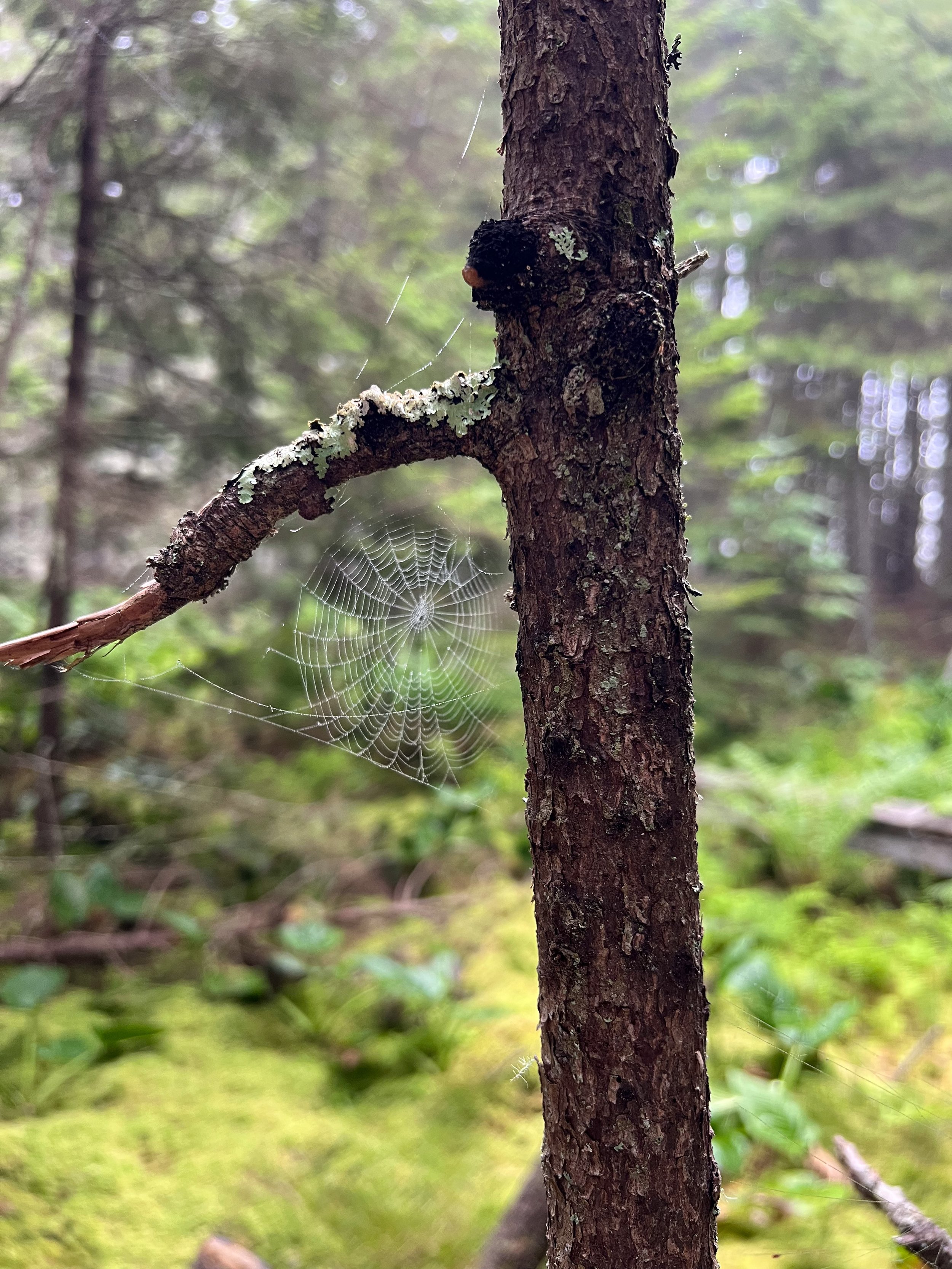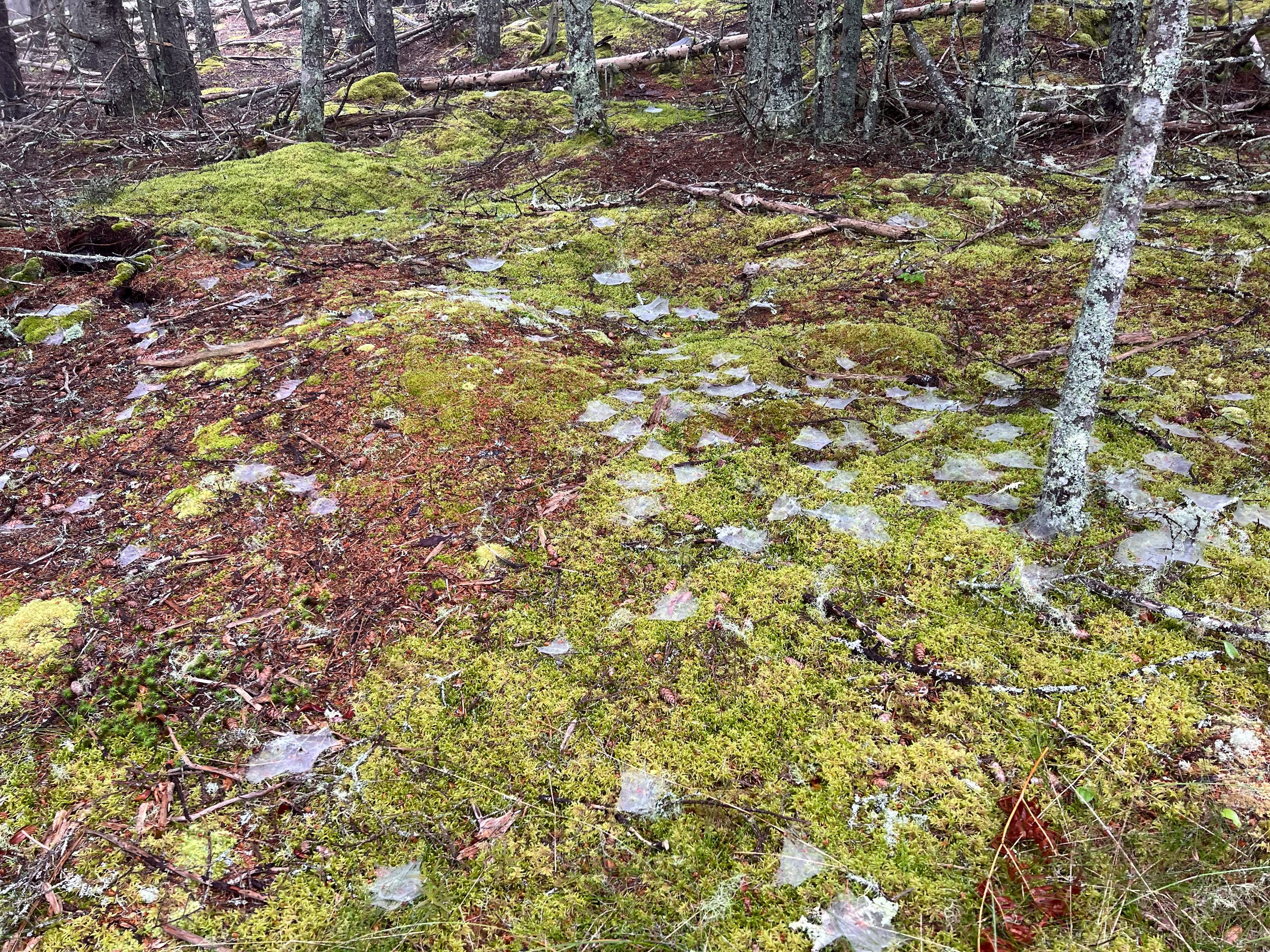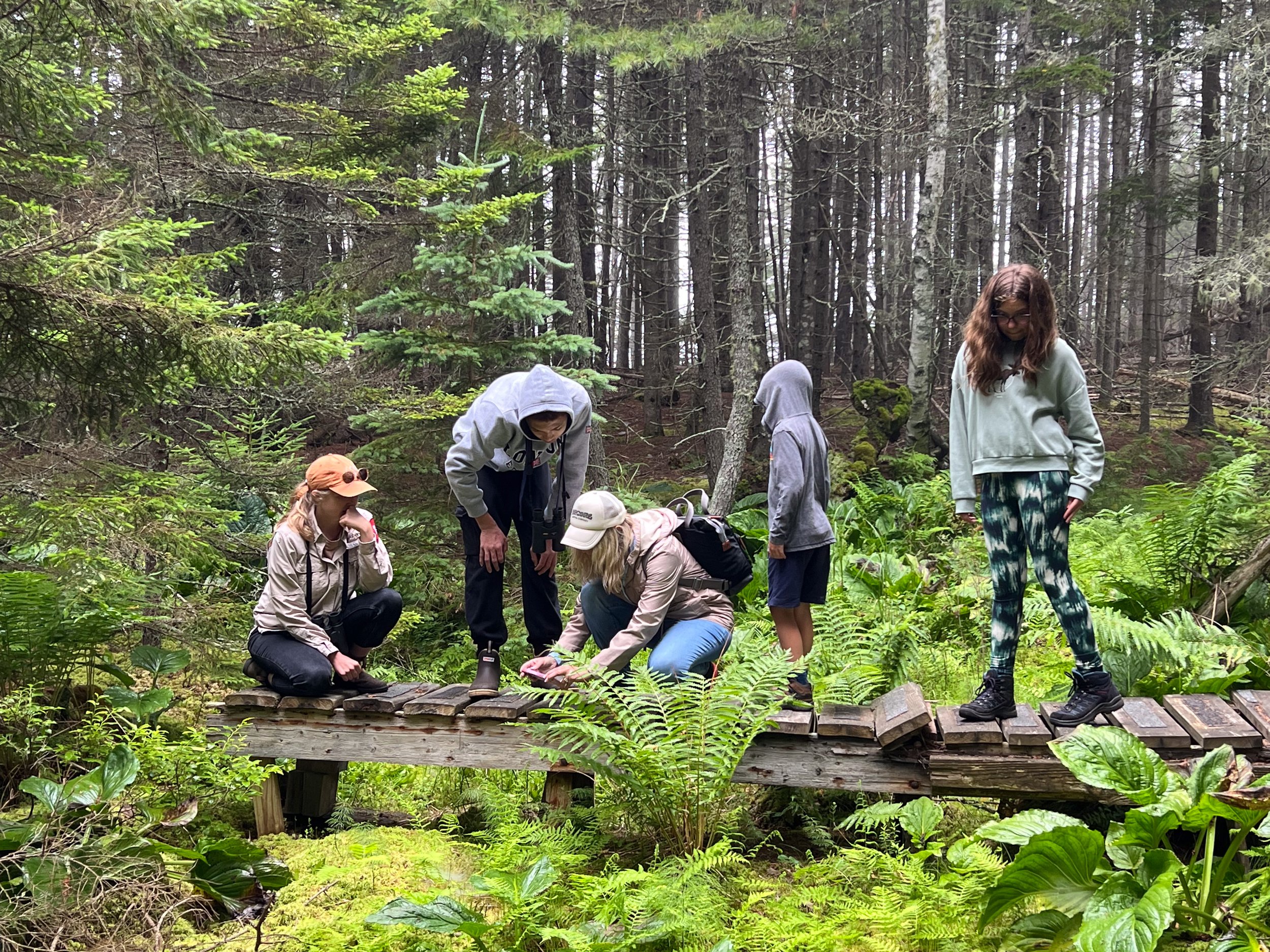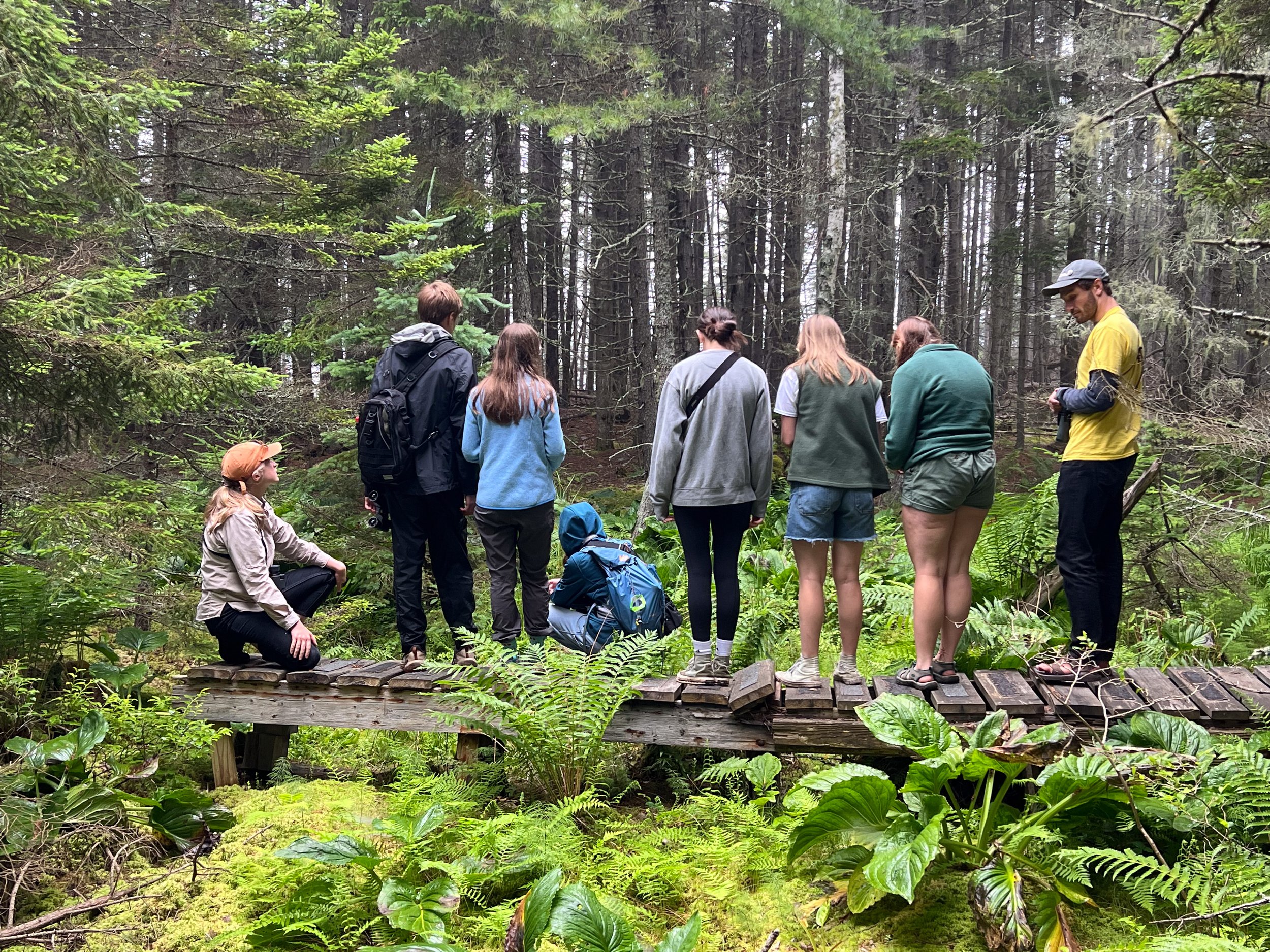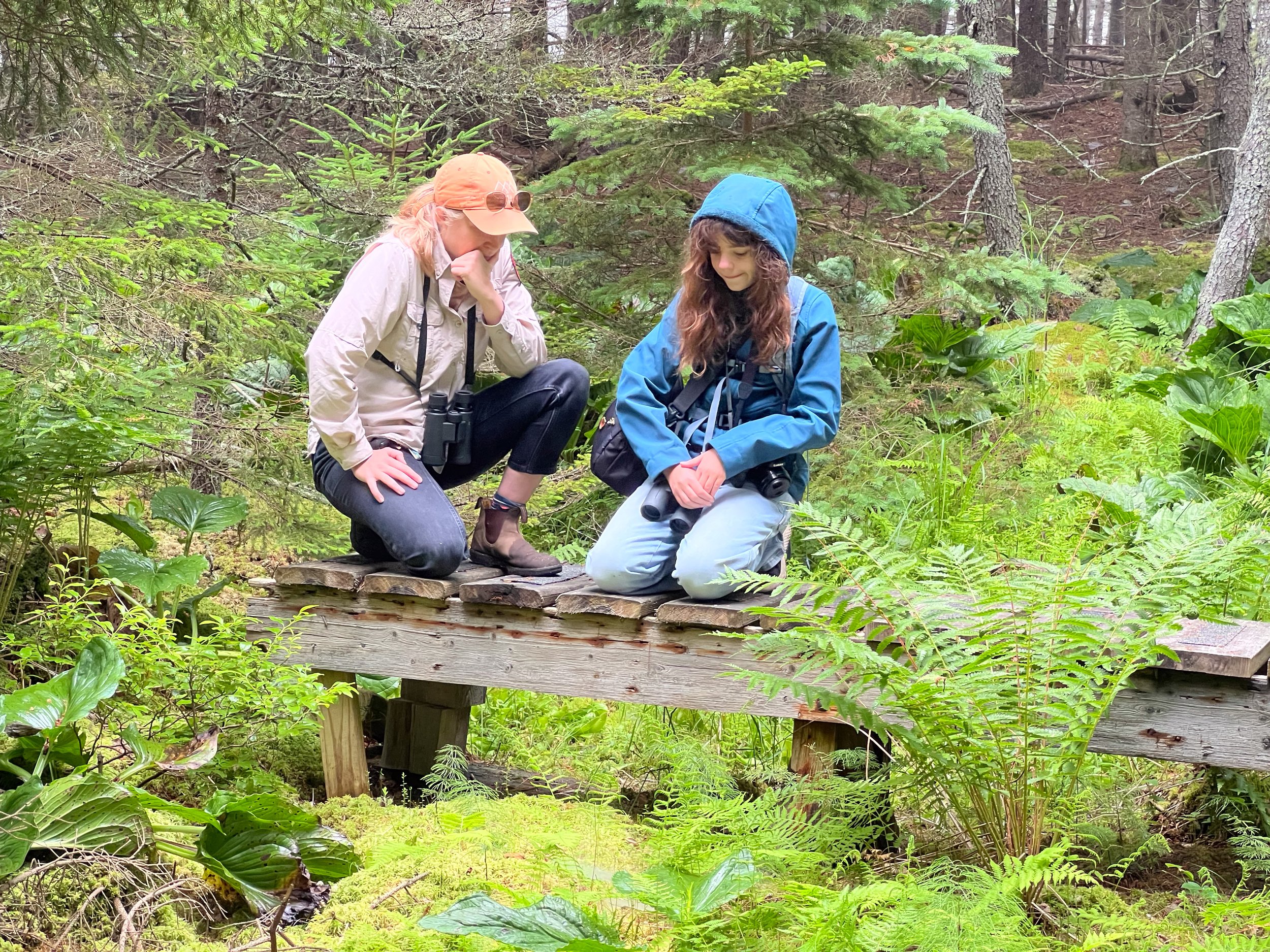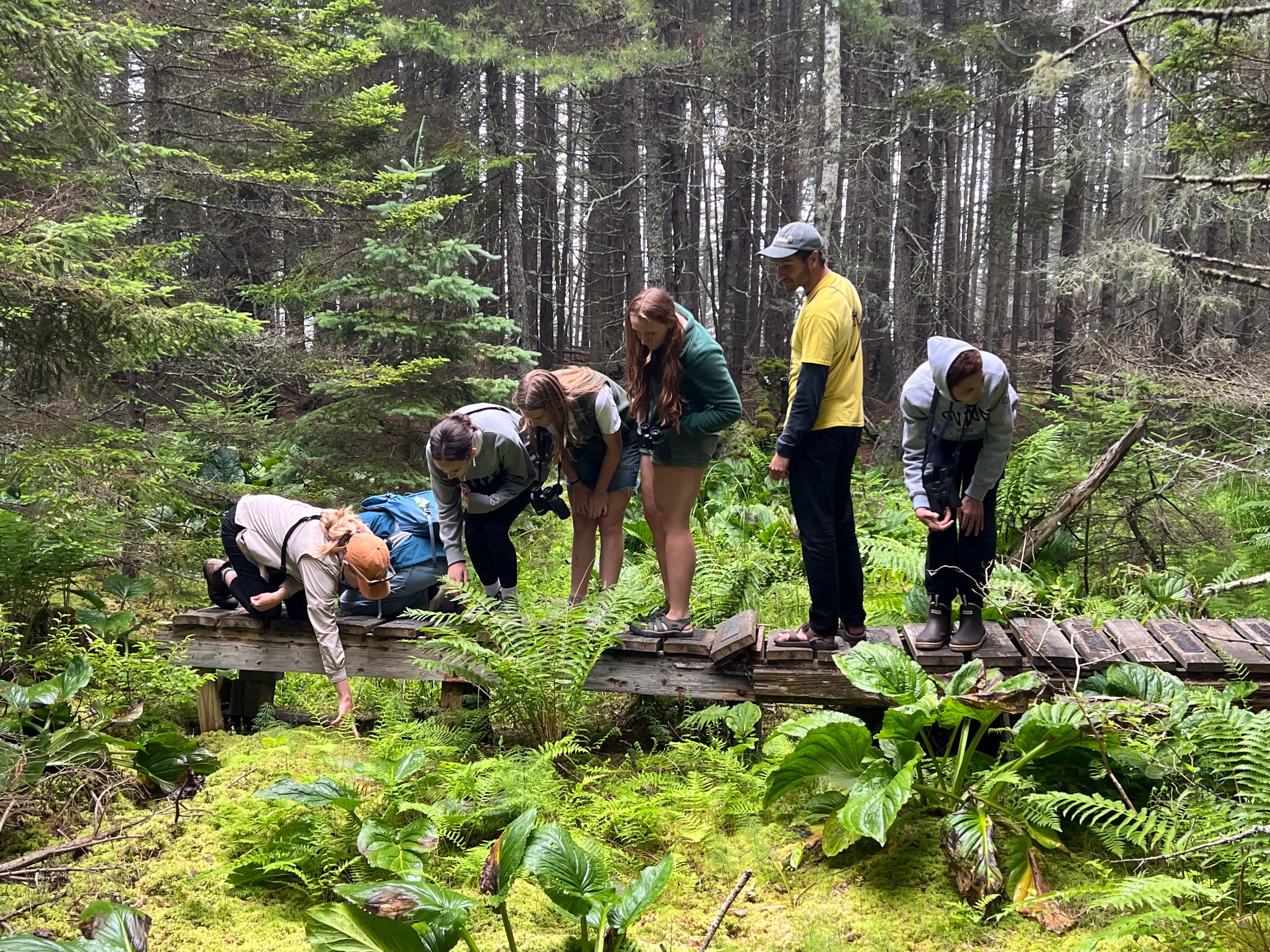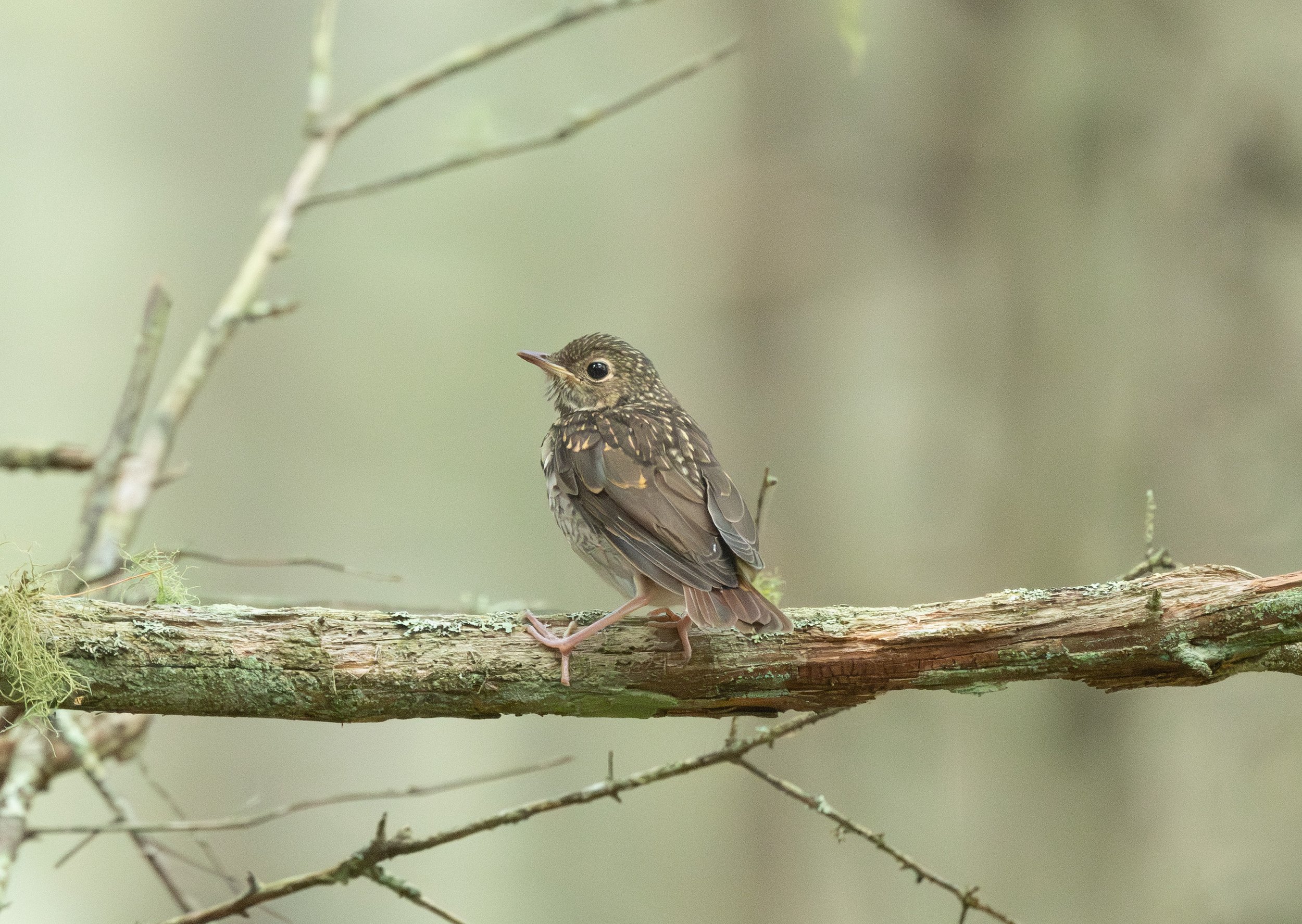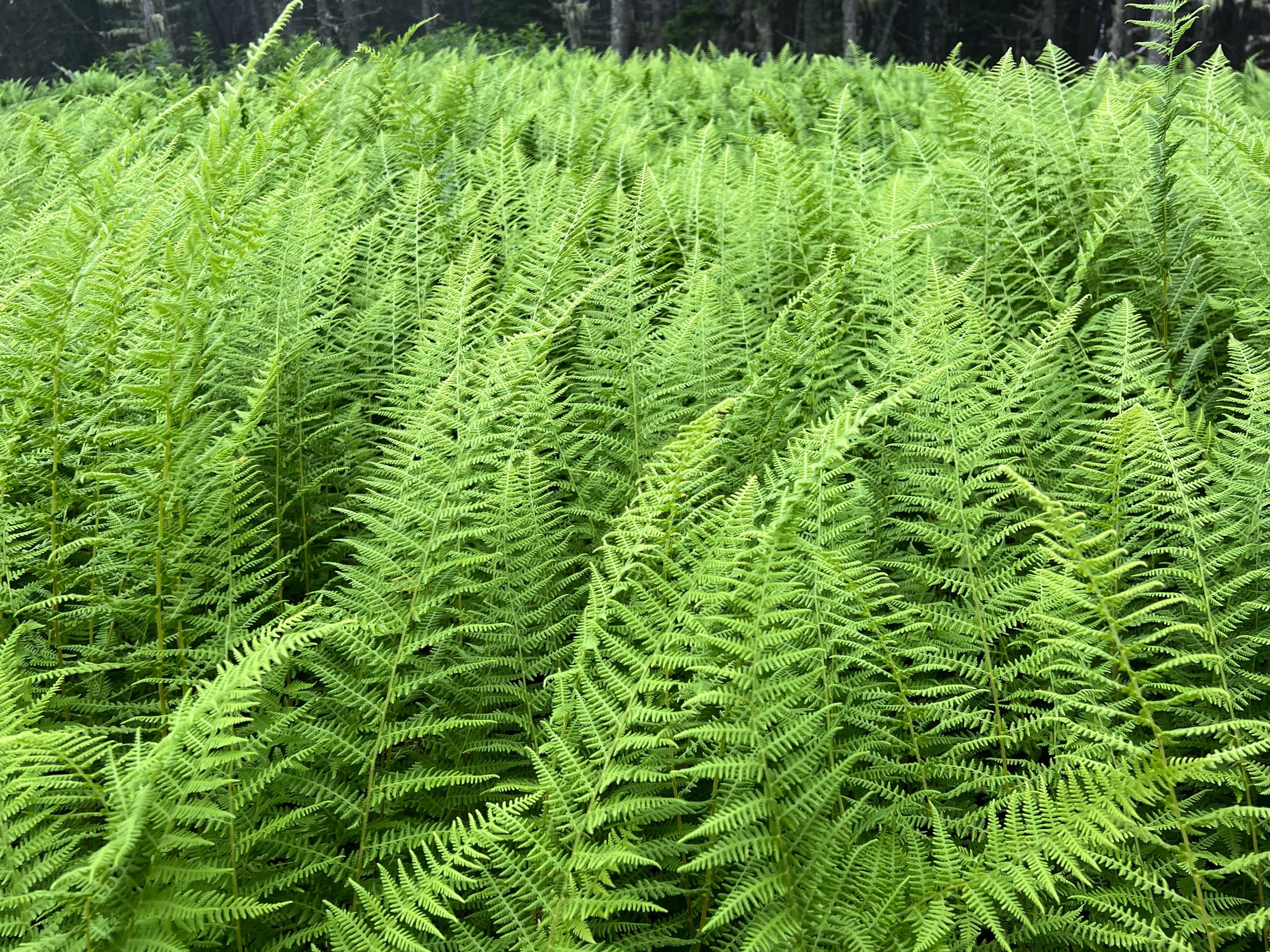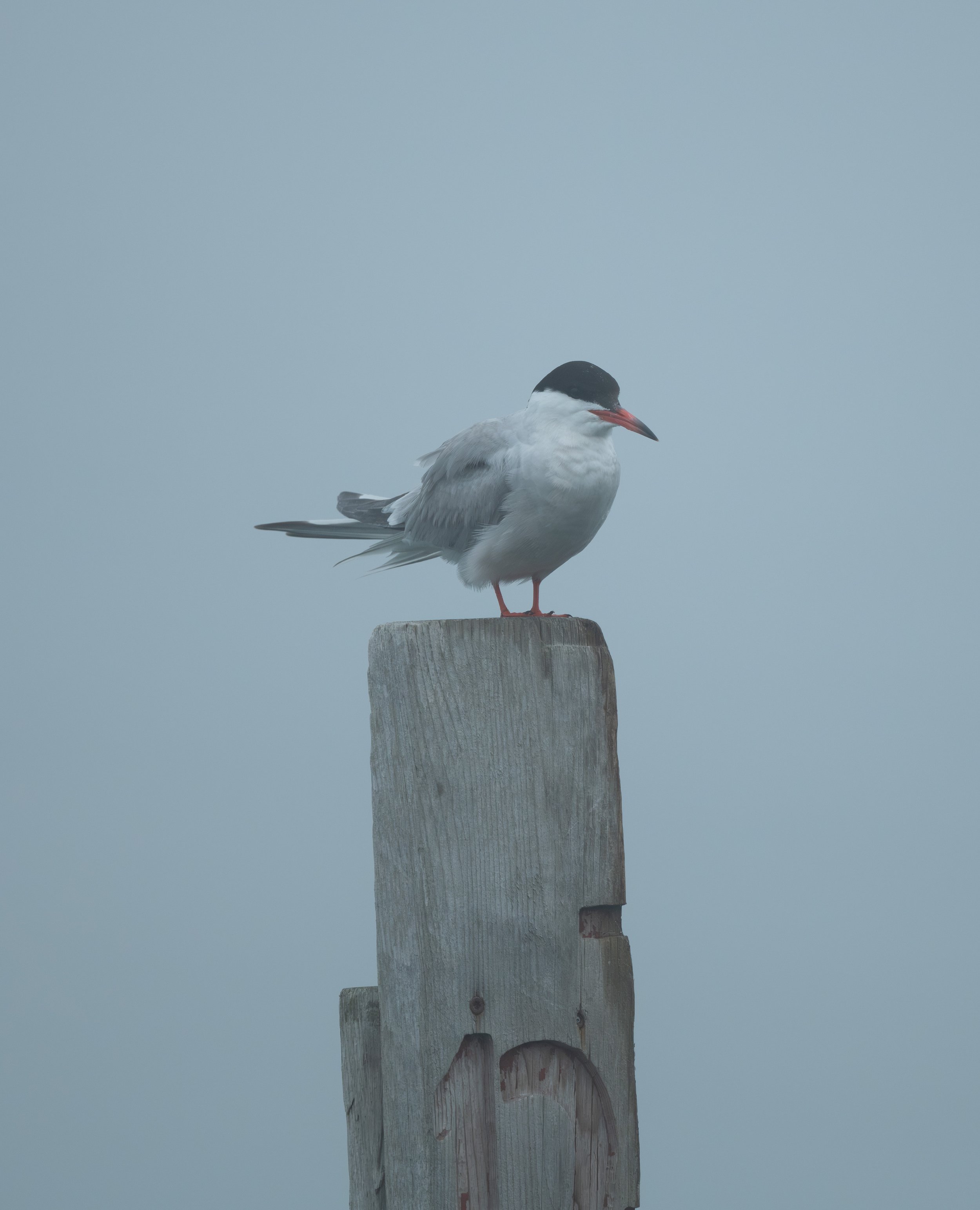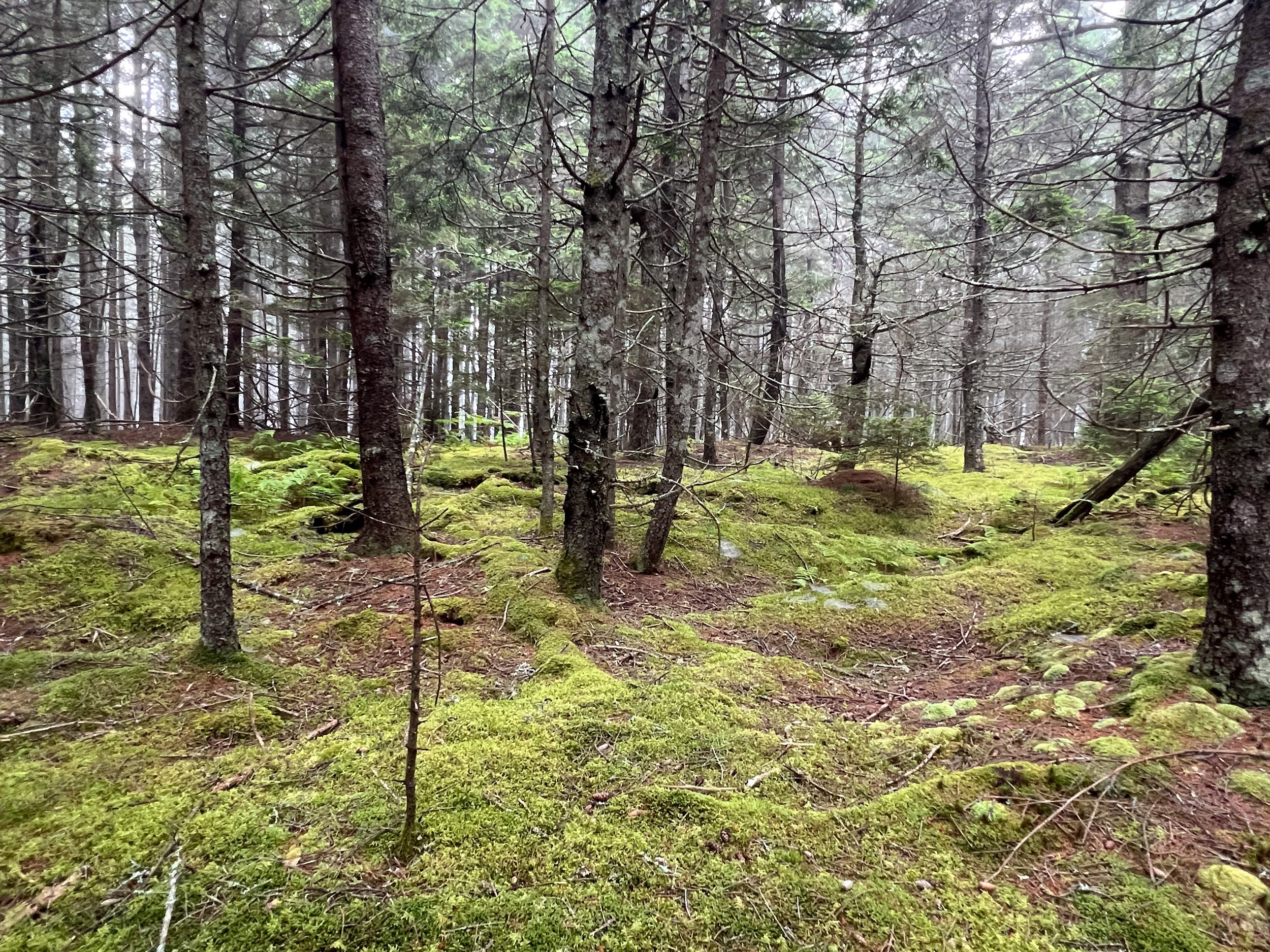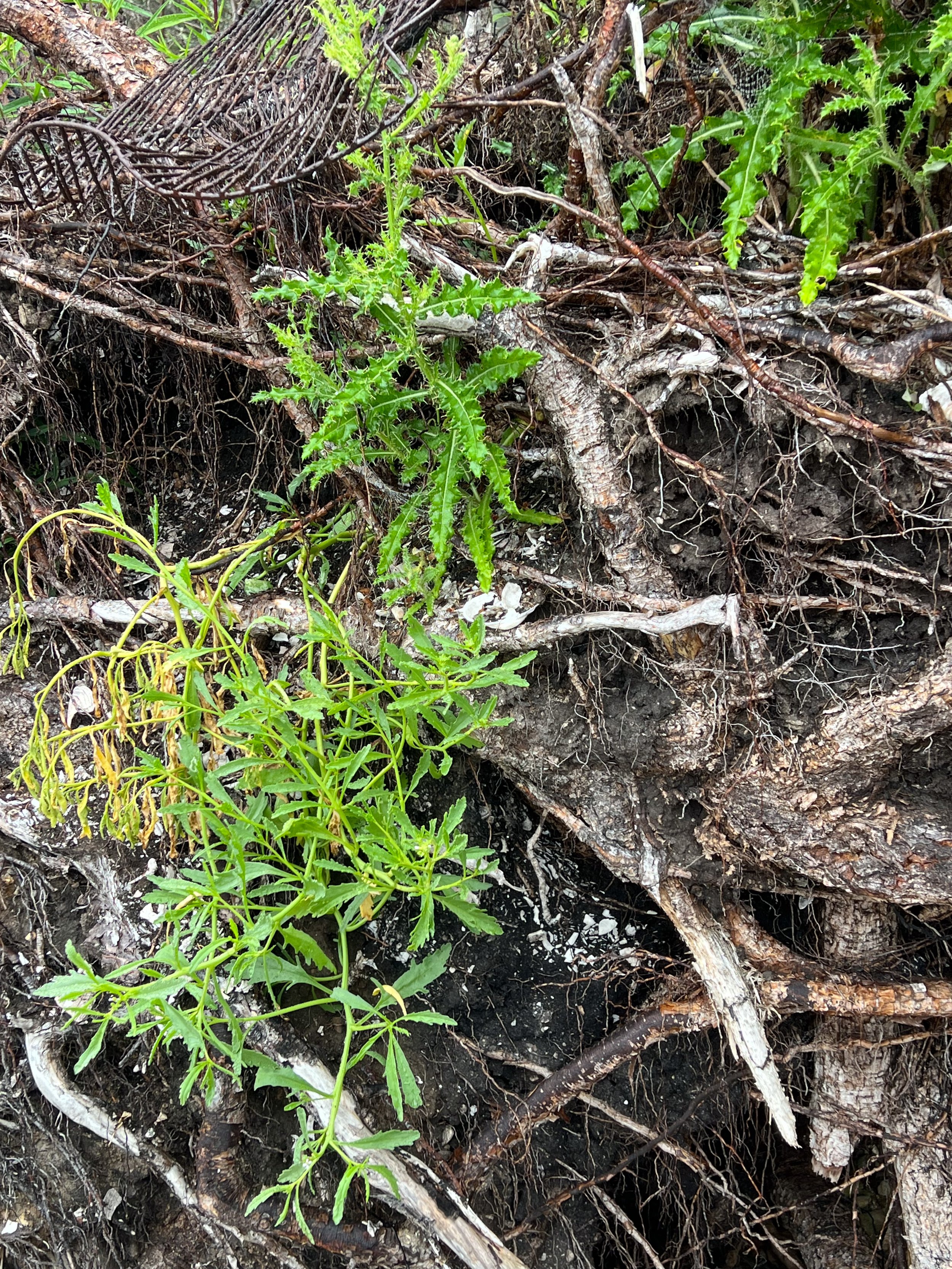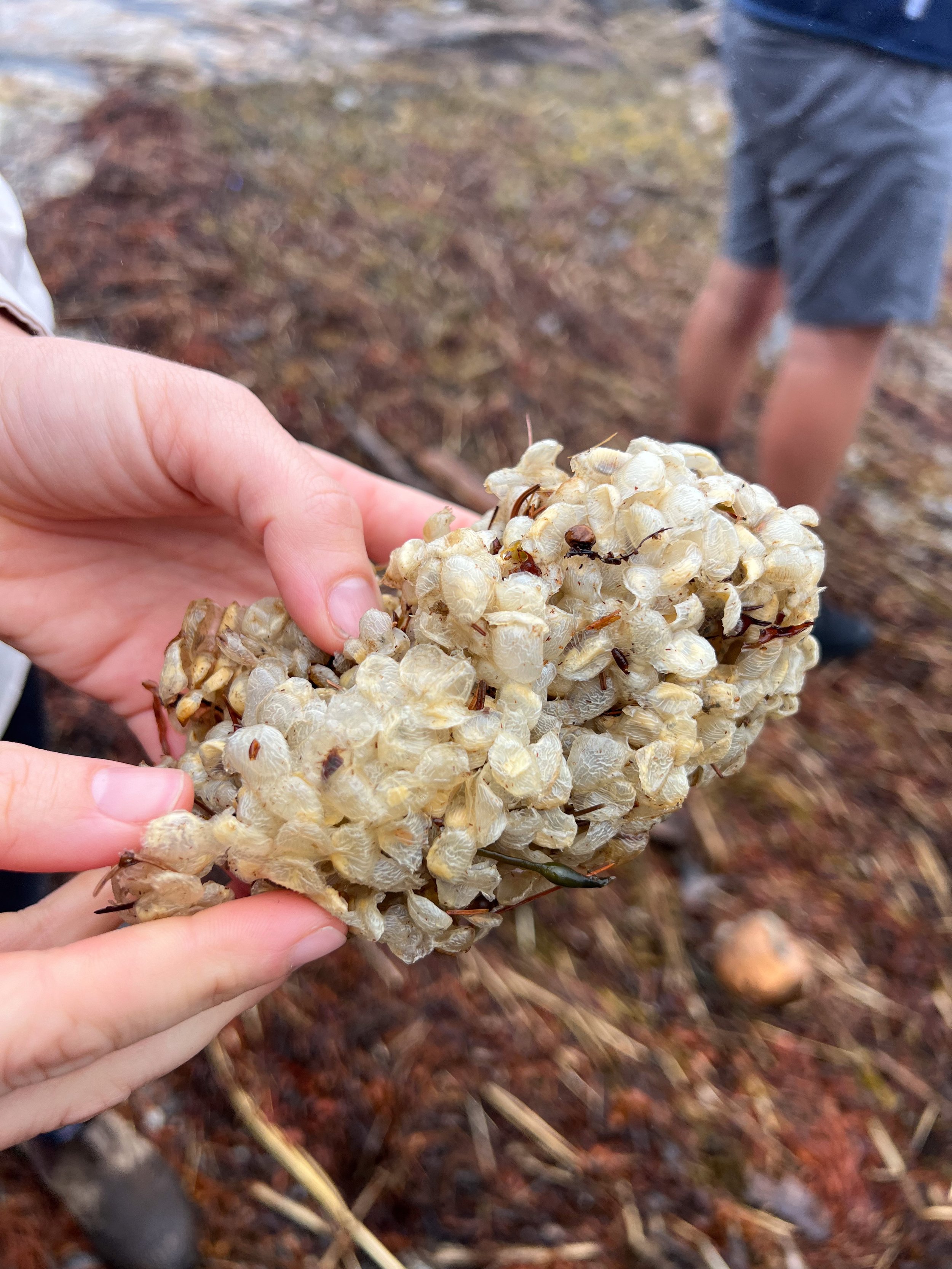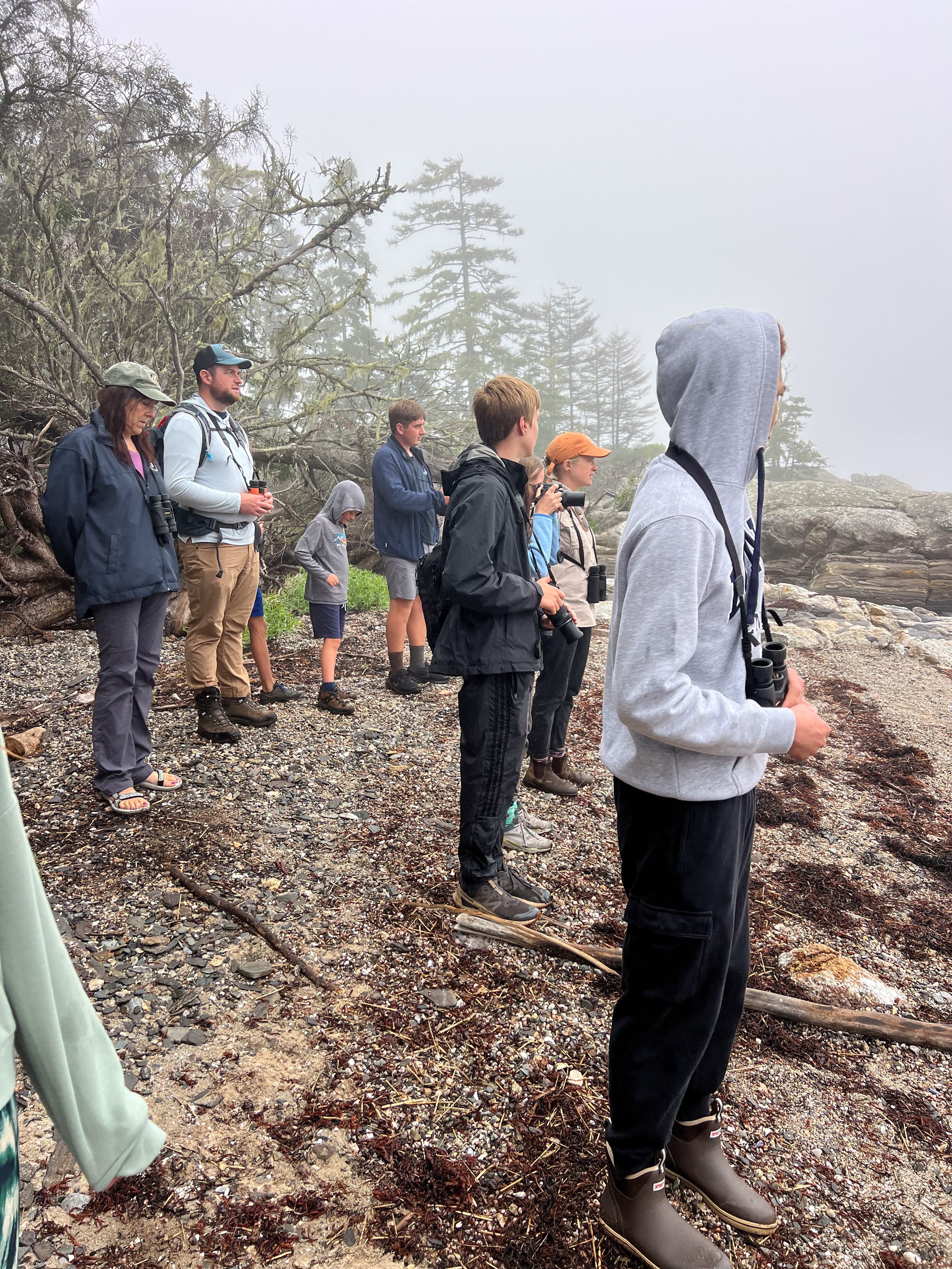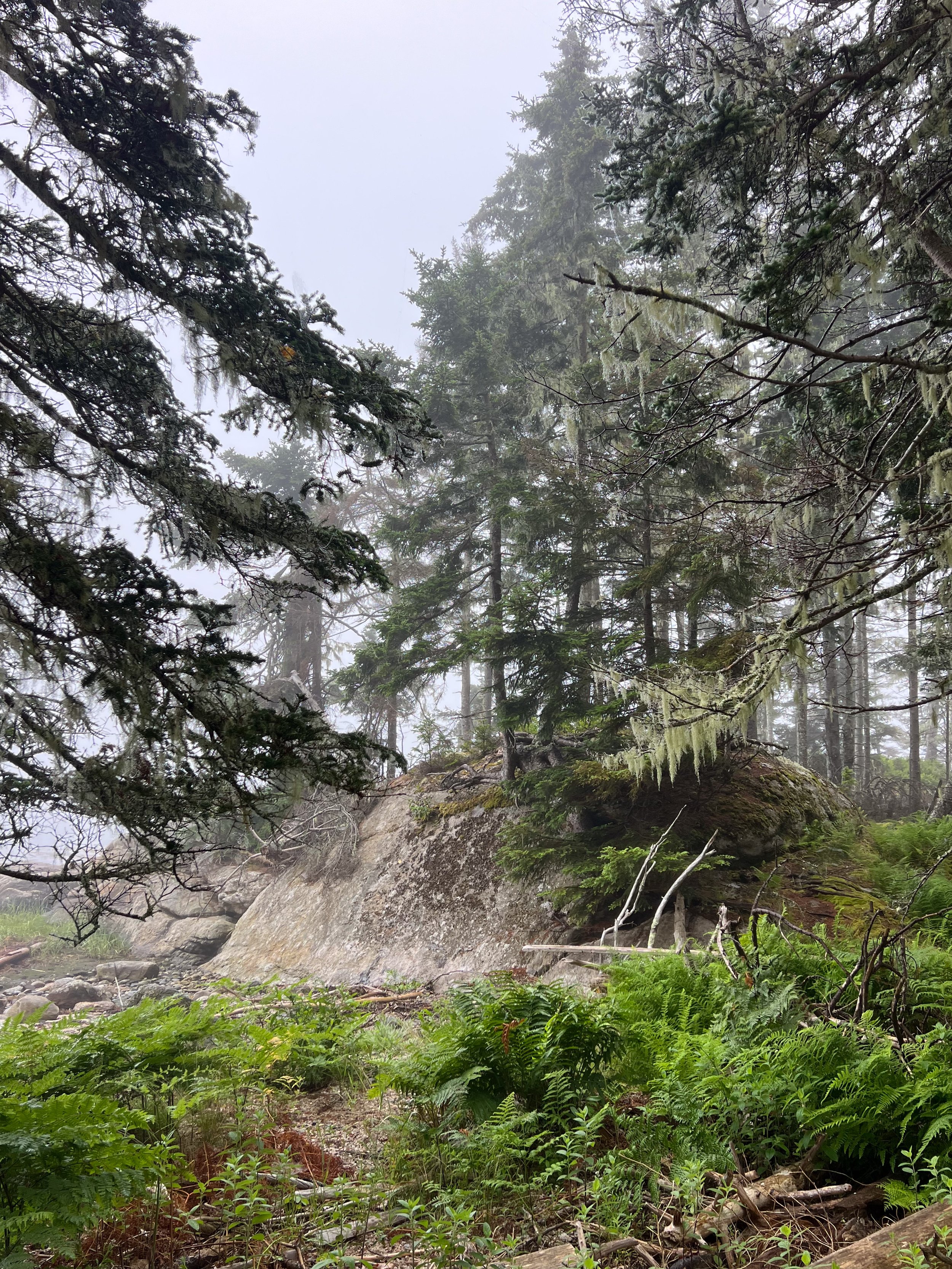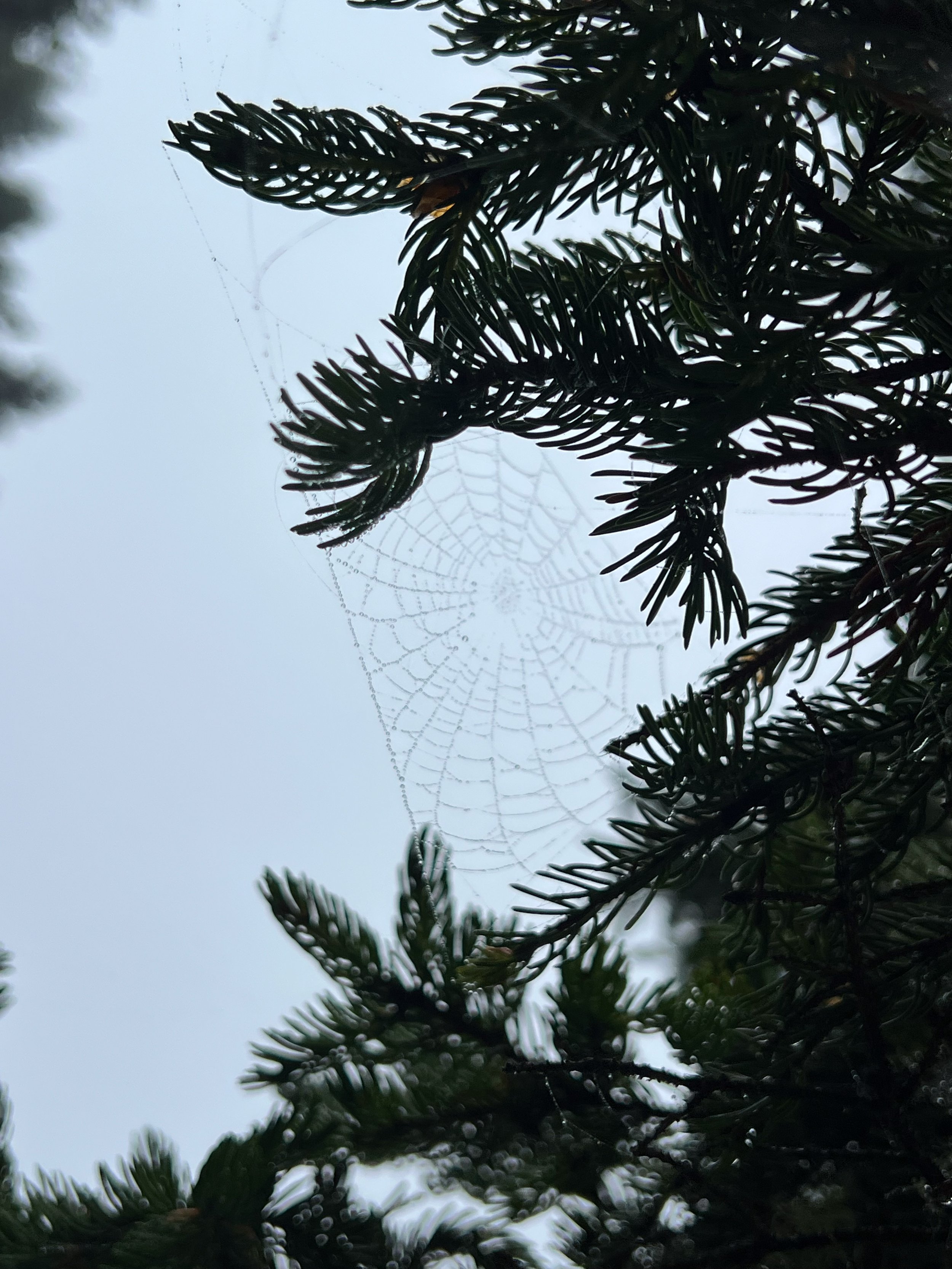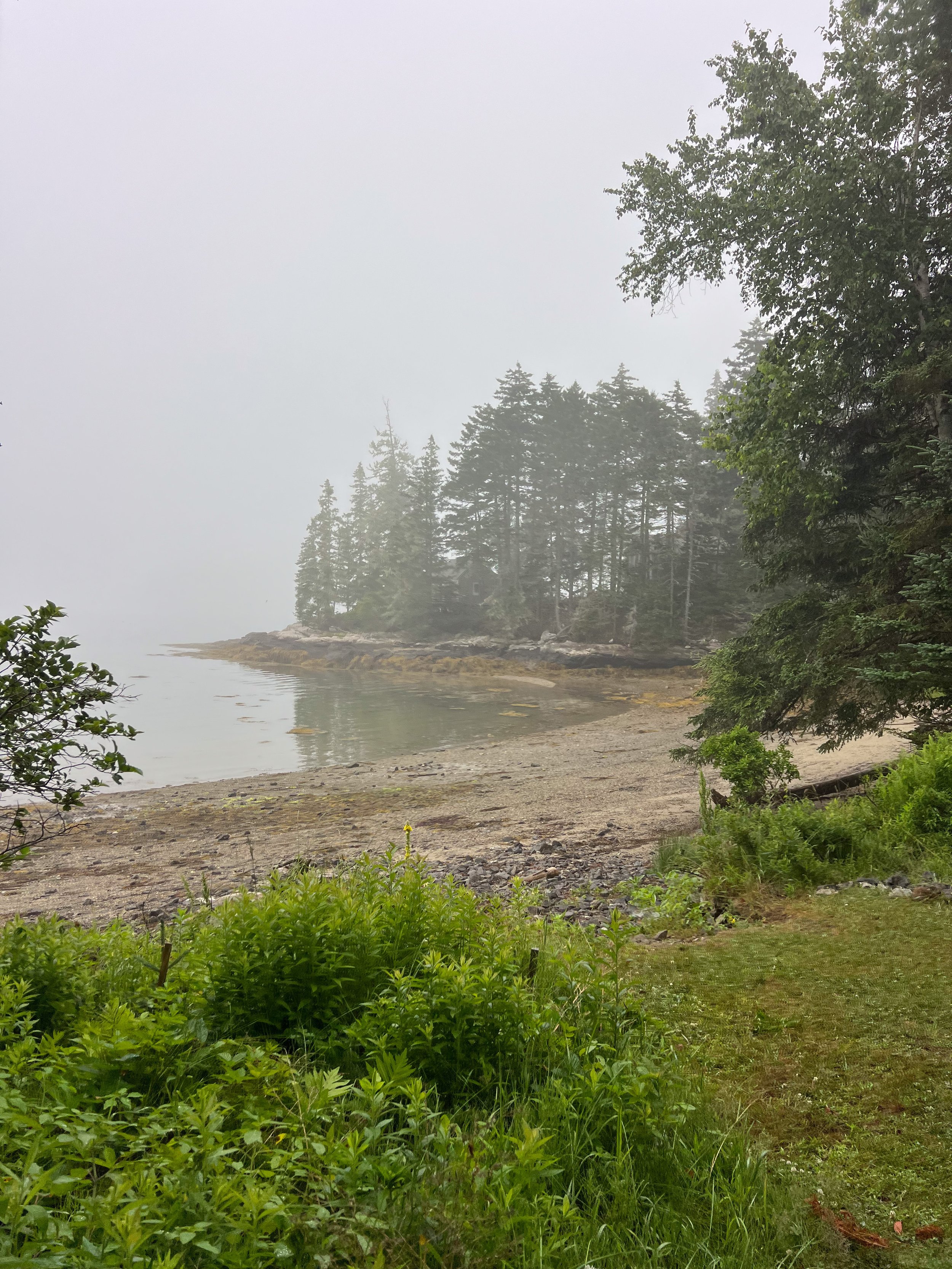By Brit Fox
On a misty Saturday morning, MYBC joined members of Downeast MYBC and Hog Island educators Rosy and Nathaniel for our first-ever trip to Hog Island. We met at the Hog Island headquarters in Bremen, ME, and walked down the long driveway to the dock, where we heard birds calling through the fog. Warblers like Common Yellowthroats and Northern Parulas sang nearby, while Osprey and Common Terns called from the water. We watched Common Terns hunting and diving, and spotted Double-crested Cormorants and Great Blue Herons flying overhead. Small fish swam below the dock—prey for the birds above. Nathaniel pointed out an empty Osprey nest atop a dock building, explaining how a pair of Great Horned Owls had been harassing the local Ospreys.
After a very brief (maybe 1 minute) boat ride, we were on Hog Island! We landed at their Queen Mary lab and proceeded up to the camp and fish house where Rosy told us about the history of Hog Island and how Project Puffin began in the very room we were sitting. It was fascinating to learn about the history of how Atlantic Puffins returned to Maine islands and it felt surreal to be in the place where it all started. The fish house had an amazing array of carved, life-sized wooden bird decoys used all over the world for different seabird reintroduction projects. It was incredible to see how small a Least Tern is compared to a Laysan Albatross and we spent some time musing how many Least Terns would fit inside of one of these massive birds. Our answer was somewhere between 40-60!
After our informative talk, we began a nature walk around the northern peninsula of the island. The mist in the air illuminated the MANY beautiful spiderwebs on the island and gave us a chance to learn about the Lichen Orb Weavers and Funnel Web Spiders who spin these masterful webs. We heard and spotted several Northern Parula Warblers who make their nests in the plentiful Old Man’s Beard lichen draping from the spruce trees on the island. We spotted a baby warbler and watched until a parent came to feed it in order to identify the species — and discovered we had been observing a fledgling Yellow-rumped Warbler. Later we heard more of these beautiful warblers singing in the forest.
We stopped at a popular tidepooling beach where we were able to explore the wrack line for interesting objects. Someone found a very cool clump of what we determined were Whelk egg casings. There were many Common Terns hunting close to shore here and we were able to watch them dive and plunge for food. We learned that these terns are nesting out on Eastern Egg Rock and that Hog Island is one of their fishing spots. Rosy also told us about Native American shell mounds and showed us the remnants of one under and around an upturned tree. We discussed the importance of trying to understand and preserve these shell mounds and all of the information that they can tell us about life on these islands thousands of years in the past. A shell mound on the southern tip of Hog Island is estimated to be 2,000 years old and was likely used by Native Americans for hundreds of years to discard their waste. These shell mounds include really interesting pieces of Native American history as well as natural history as they contain bone fragments of now extinct birds like the Great Auk.
We continued on to explore some of the microhabitats of Hog Island including a small salt marsh and a bog. MYBC got a great chance to observe some amazing carnivorous plants in the bog including Purple Pitcher Plants and Sundews. We learned that because of constant water flow, bogs are very nutrient deficient for plants and this caused carnivorous plants to evolve this kind of feeding strategy. Along the way, we heard and observed more birds such as a juvenile Hermit Thrush flitting about on tree limbs and the most covered forest floor and a Red-breasted Nuthatch high up in a spruce. While standing in a lush grove of ferns, the group heard the “jib jib jib” of Red Crossbills flying over.
We ended our walk back at the main camp area where we explored the Queen Mary lab before taking the boat back to the mainland. The lab contained many interesting skins of birds and animals to study. From the dock, we spotted three Harbor Seals and watched nine Short-billed Dowitchers fly by. A noisy Common Tern perched on the tide marker to bid us farewell. Overall, we had a very fun and informative day on the island and many of us were not ready to leave. There’s so much to explore on Hog Island and MYBC can’t wait to go back to this beautiful place!
Our full checklists for the trip can be seen here:
Stay tuned for our August trip details and until then, happy birding!
